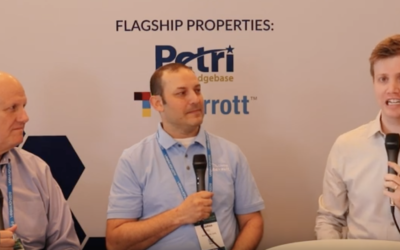Can you restore what you need to, right now?
Many companies have workloads in many places and in many forms. Split amongst virtual and physical, on-premises and cloud or multi-cloud, priority for these systems is keeping them running and available. Years ago, the “P2V conversion movement” dealt with transitioning aging physical servers into their new homes as virtual machines. This solved a number of problems, mostly hardware that was old, no longer supported, out of warranty, or simply “could not be turned off” for application reasons.
Fast forward many years, and the issue still lives. Industries, and customers, demand availability, no matter what the source. The question now becomes one of keeping things running no matter where they exist, specifically when you need to restore the system for some reason.
Can Veeam back up physical servers?
Veeam® Software, a leader in Cloud Data Management, and the pioneers of instant virtual machine recovery, provides the recovery solutions you need. Veeam started as a virtual-only solution but began offering agents for physical servers in 2017. Veeam has been able to restore any Veeam agent-based Windows into Hyper-V for a time now, but with Veeam Backup & Replication v10 released in February of this year, any Veeam-based backup of a workload can be restored as a VMware vSphere virtual machine. According to Veeam’s documentation, this includes:
- Backups of VMware vSphere virtual machines created with Veeam Backup & Replication
- Backups of vCloud Director virtual machines created with Veeam Backup & Replication
- Backups of Microsoft Hyper-V virtual machines created with Veeam Backup & Replication
- Backups of virtual and physical machines created with Veeam Agent for Microsoft Windows or Veeam Agent for Linux
- Backups of Nutanix AHV virtual machines created with Veeam Backup for Nutanix AHV
- Backups of Amazon EC2 instances created with Veeam Backup for AWS
- Backups of Microsoft Azure virtual machines created with Veeam Backup for Microsoft Azure
This solution utilizes Instant VM Recovery and a new instance of that system or workload can be up and running in a vSphere environment in minutes or even seconds, allowing you to P2V or even V2V systems easily and without additional hardware or cost, assuming you have a vSphere environment with sufficient resources available.
For Global Data Vault, this provides additional disaster recovery options and flexibility to benefit our customers.
More DRaaS & BaaS Articles
How to Protect Against Ransomware Attacks
It's more important than ever to protect against ransomware. Cybercriminals are having a field day targeting business and government IT infrastructures. You can no longer assume that these criminals only go after weak or poorly secured targets because that is simply...
Adding an Air Gap to the 3-2-1 Backup Rule
It’s not a matter of IF your business will succumb to hackers, a natural disaster, insider threat, or other mismanagement of data. It’s a matter of WHEN. Naturally, it’s become common practice to keep safe backups of anything business essential, but how companies keep...
Worst Cybersecurity Breaches – VPNFilter
More and more, our business environments are connected to the cloud. The transmission of data and the speed to which it can be accessed is critical to business intelligence and competitive advantage. When that data becomes attractive to hackers, the vulnerability also...
Bandwidth – How Much is Enough?
Knowing and planning for an appropriate level of bandwidth is a key component of every DRaaS solution. In our most common DRaaS implementation, the data is moved from local repositories at the customer site over the internet or WAN to our data centers once per day,...




0 Comments